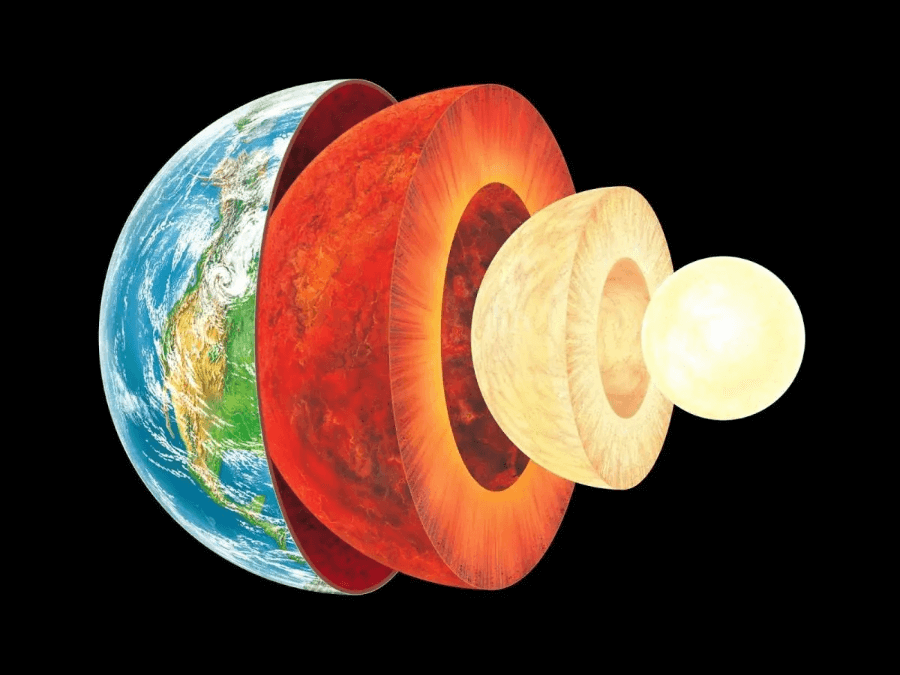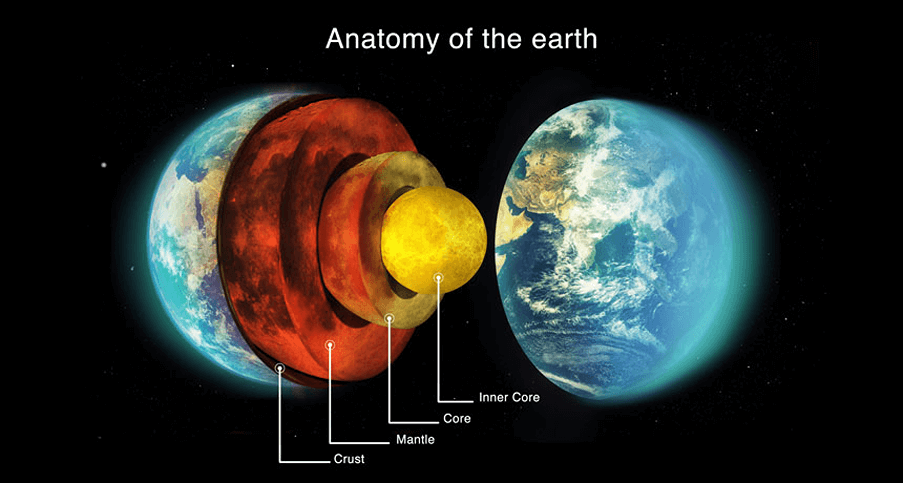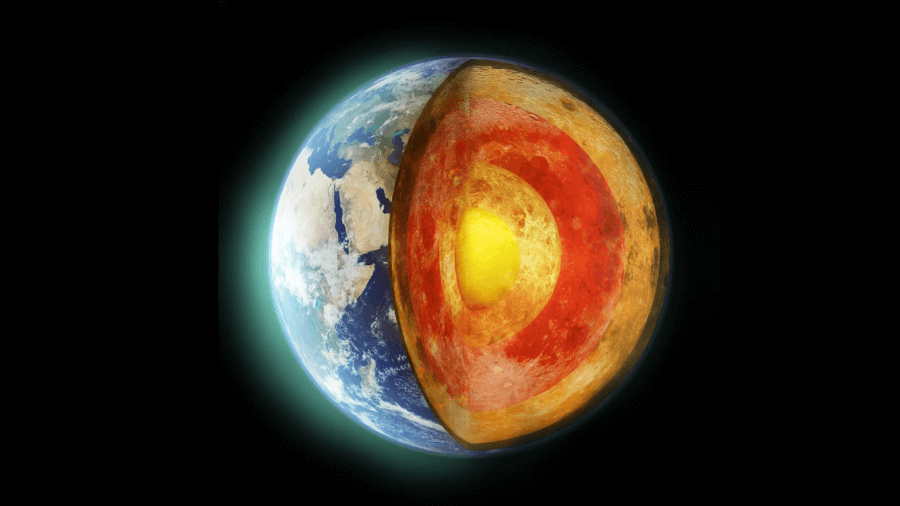📑Table of Contents:
We live on a giant sphere with multiple layers. But did you know we exist on the Earth’s Thinnest Layer? The Earth’s crust—our planet’s outer shell—makes up just a tiny fraction of Earth’s total volume. Yet, it holds mountains, oceans, cities, and life itself.
So why is this layer so thin? And how does it impact everything from earthquakes to ecosystems? Let’s dig deep—figuratively, at least.

Earth Has Four Main Layers
To understand the crust, you need to know the whole structure. Earth has four major layers:
- Inner core – A hot, solid ball made of iron and nickel
- Outer core – A liquid metal layer that surrounds the inner core
- Mantle – A thick, rocky zone that makes up most of Earth’s volume
- Crust – The outermost, thinnest layer, where we all live
Each layer plays a role in shaping Earth. But the crust is the most accessible. It’s also the most important thing in life as we know it.
How Thin Is the Crust?
Compared to the mantle and core, the crust is paper-thin. On average, it’s just 5 to 70 kilometers thick. That’s thinner than the skin of an apple in proportion to the whole fruit.
Still, not all crust is created equal.
There are two types:
- Oceanic crust – Thin and dense (5–10 km), found under oceans
- Continental crust – Thicker and lighter (30–70 km), found under land
Oceanic crust is relatively young and is constantly recycled through tectonic activity. Continental crust, on the other hand, is older and more stable. It forms continents and supports most human life.
Why Is the Crust So Thin?
Earth’s crust formed as the planet cooled billions of years ago. Heavier materials sank to the center, while lighter ones floated to the top. The result? A thin outer shell that hardened into solid rock.
Because Earth’s interior remains hot and dynamic, the crust never grows too thick. Instead, it constantly shifts, breaks, and reforms. That’s why earthquakes and volcanoes happen, especially where crustal plates collide or pull apart.
So, its thinness isn’t a flaw. It’s a feature that drives geological activity.
What Is the Crust Made Of?

Mostly rock. But not all stones are the same.
- Oceanic crust: Basalt, rich in iron and magnesium
- Continental crust: Granite, rich in silicon, aluminum, and oxygen
The crust also contains valuable minerals, such as gold, copper, and rare earth elements. We extract most of our raw materials—metals, fossil fuels, and building stones—from this layer.
In short, everything we build, mine, or drill comes from Earth’s thinnest skin.
Why the Crust Matters
You might think the thinness makes it less important. The opposite is true.
Here’s what the crust does:
- Supports ecosystems – Forests, deserts, cities, and crops all sit on it
- Regulates climate – Through volcanoes, it releases gases like CO₂ and sulfur
- Enables plate tectonics – Earth’s crust is divided into plates that move
- Shapes the landscape – Mountains, valleys, and ocean basins form due to crustal motion
- Host’s life – No other layer supports complex life like the crust does
Without the crust, there’s no land to walk on, no soil to grow food, and no rock to build homes. It’s thin, yes—but it holds everything together.
Natural Disasters Start in the Crust
Because the crust is brittle and mobile, it’s also where natural disasters begin.
- Earthquakes happen when crustal plates grind or slip
- Volcanoes erupt when magma pushes through weak points in the crust
- Tsunamis form after massive crustal shifts under the ocean
These events remind us that Earth’s surface is always changing. While we tend to see land as stable, it’s part of a fragile, moving puzzle.
Can We Go Below the Crust?
Not easily. Scientists have drilled into the crust, but only about 12 kilometers deep—the Kola Superdeep Borehole in Russia holds the record. That’s barely a scratch.
Why so shallow?
Because temperatures rise quickly. For every kilometer down, the heat increases by about 25–30°C. Equipment melts. Pressure builds. Drilling becomes impossible.
That’s why most of what we know about Earth’s layers comes from seismic data, not direct observation.

Final Thoughts: Thin but Powerful
The Earth’s crust is thin, but it’s not weak. It shapes everything we know and see. It holds our cities, forests, oceans, and homes. It drives earthquakes, builds mountains, and carries the fingerprints of life.
Although it’s only a fraction of Earth’s volume, the crust matters more than its thickness suggests. Sometimes, the thinnest layer holds the most power.





